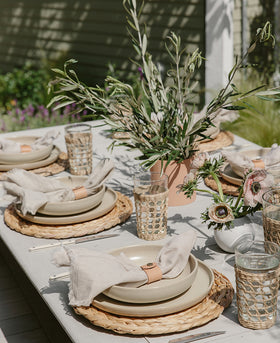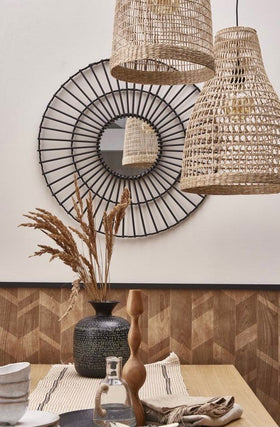
Bat Trang: Where Clay Comes to Life
Nestled on the banks of the Red River, just outside of Hanoi, Vietnam, lies the charming village of Bat Trang. Renowned for its centuries-old tradition of ceramic craftsmanship, Bat Trang has earned its place as one of Vietnam's most beloved cultural gems.
A Legacy of Ceramics
The origins of Bat Trang's ceramic heritage can be traced back to the 13th century when artisans from the Ly dynasty established kilns in the village. Over the years, Bat Trang's potters developed unique techniques, producing a wide range of ceramic products, from everyday household items to exquisite works of art.
Bat Trang ceramics encompass a wide range of forms and designs, from everyday household items to intricate decorative pieces. This diversity caters to various tastes and preferences, making Bat Trang ceramics a versatile and attractive choice.
A Thriving Handicraft Hub
Today, Bat Trang remains a thriving handicraft hub, with over 700 families engaged in ceramic production. The village is home to numerous workshops, galleries, and shops, where visitors can witness the intricate process of ceramic making and purchase a variety of handcrafted items.
The village's ideal location, skilled artisans, and deep-rooted cultural heritage have all contributed to its reputation as a center of ceramic excellence.
-
Terrain
Bat Trang's proximity to the Red River provides a readily available source of clay, a crucial raw material for ceramic production. The river's alluvial clay is rich in kaolin, a type of clay that is highly prized for its plasticity and whiteness. This abundance of high-quality clay has been a key factor in Bat Trang's success as a ceramic village.
-
Skillful Artisans
The people of Bat Trang have been making ceramics for centuries, and their skills have been passed down from generation to generation. The village is home to a large number of skilled artisans who are experts in every aspect of ceramic production, from shaping the clay to firing the kilns.
-
Longlasting culture
Ceramic production is deeply ingrained in the culture of Bat Trang. The village is home to numerous workshops, galleries, and shops, and many families have been involved in the ceramic industry for generations. This deep-rooted cultural heritage has fostered a strong sense of community and pride in Bat Trang's ceramic tradition.

The process of making ceramic products in Bat Trang Village, Vietnam, has been perfected over centuries, resulting in a unique and intricate art form. Here's a detailed tutorial on the stages involved in creating a ceramic masterpiece in Bat Trang:
Stage 1: Clay Preparation
-
Clay Selection: Bat Trang is renowned for its abundance of high-quality kaolin clay, a key ingredient for crafting durable and beautiful ceramics. Artisans carefully select the clay based on its plasticity, whiteness, and overall quality.
-
Clay Wedging: To remove air pockets and ensure even consistency, the clay undergoes a process called wedging. This involves repeatedly folding and kneading the clay until it becomes smooth and malleable.
-
Clay Aging: After wedging, the clay is left to rest for several days or weeks. This aging process allows the clay to relax, making it more workable and less prone to cracking during the shaping process.
Stage 2: Forming and shaping

-
Hand Building: One of the primary techniques used in Bat Trang is hand building, where artisans use their hands and simple tools to mold the clay into desired shapes. This method allows for a wide range of creative expression and flexibility in design.
-
Wheel Throwing: For creating symmetrical forms, Bat Trang artisans employ wheel throwing, a technique that utilizes a rotating potter's wheel to shape the clay. This method requires skill and practice but produces elegant and precise pieces.
Stage 3: Decorating
The decoration of Bat Trang ceramics is not merely aesthetic; it often carries symbolic meaning. Traditional motifs include floral patterns, dragons, phoenixes, and scenes from daily life, each representing cultural beliefs and values. Today, Bat Trang artisans continue to innovate and refine these techniques, creating ceramics that are both timeless and contemporary.
Stage 4: Drying and firing
-
Slow Drying: After shaping, the ceramic pieces undergo a slow and controlled drying process to prevent cracking or warping. This involves placing the pieces on drying racks in a well-ventilated environment.
-
Bisque Firing: Once the pieces are completely dry, they are ready for their first firing, known as bisque firing. This firing hardens the clay and removes any remaining moisture, preparing the pieces for glazing.
Stage 5: Glazing
-
Glaze Preparation: Bat Trang artisans carefully mix different minerals and oxides to achieve the desired colors, textures, and finishes.
-
Glaze Application: Using brushes or dipping techniques, artisans meticulously apply the glaze to the bisque-fired pieces. The glaze evenly coats the surface, creating a protective layer and enhancing the piece's aesthetics.
-
Glaze Firing: The glazed pieces undergo their second firing, known as glaze firing. This firing temperature is higher than bisque firing, causing the glaze to melt and fuse with the ceramic body, resulting in a smooth, glossy finish.
After these stages, finished ceramic products undergo rigorous quality control to ensure they meet Bat Trang's high standards of craftsmanship and aesthetics.
Economic Impact
The ceramic craft industry in Bat Trang, Vietnam has become a major source of employment for the local people, contributing to the development of the local economy. The village's rich ceramic tradition, coupled with its growing popularity, has created a thriving handicraft hub that provides employment opportunities for a large portion of the population.

Bat Trang's ceramic legacy continues to evolve, with new generations of artisans incorporating modern techniques while preserving traditional designs. The village's commitment to quality and innovation ensures that Bat Trang ceramics will continue to grace homes and galleries worldwide for generations to come.






